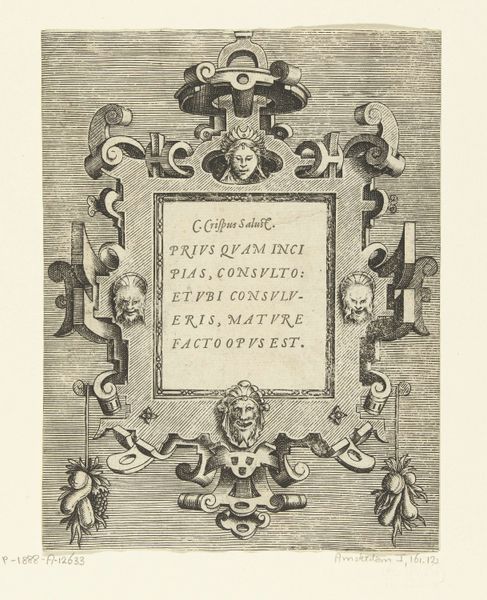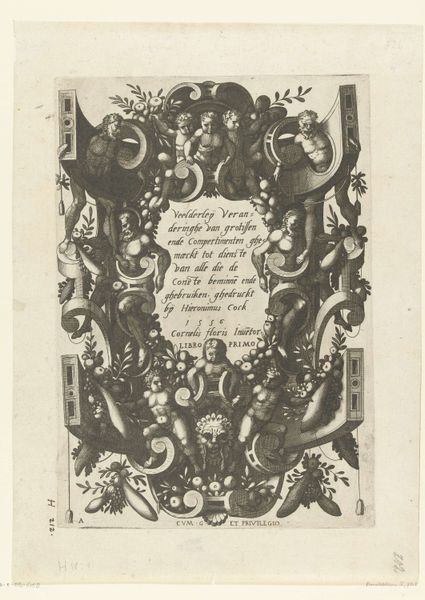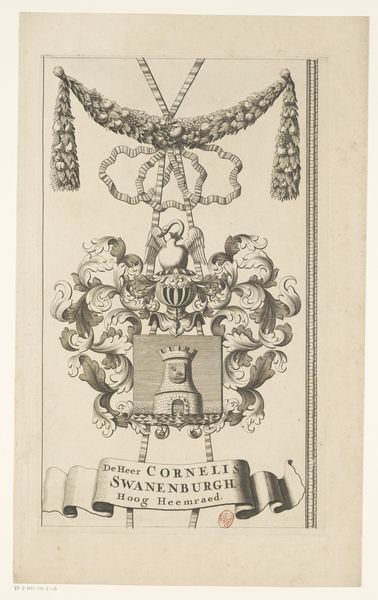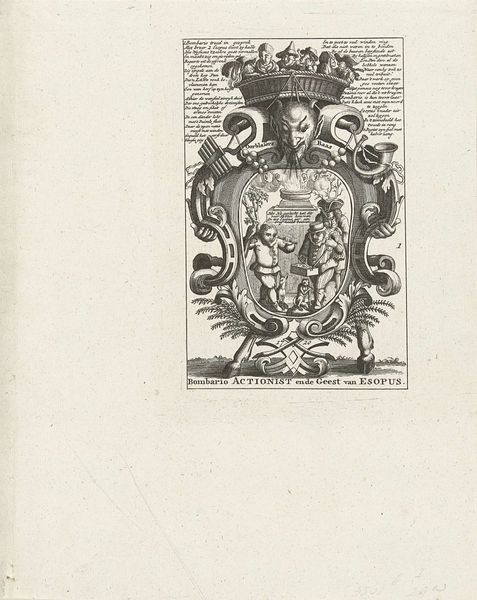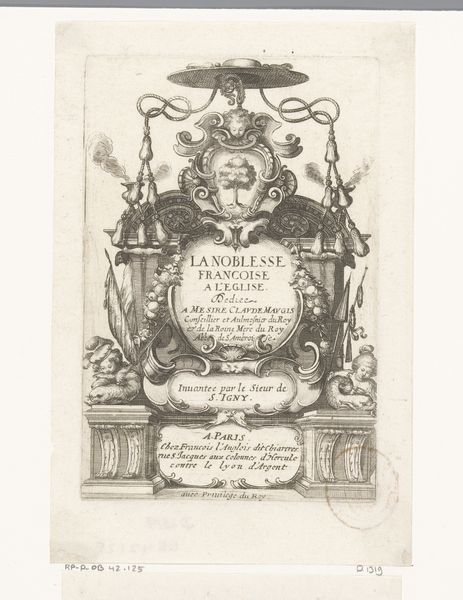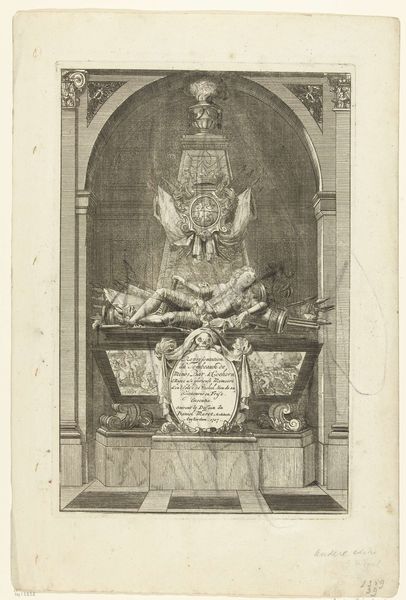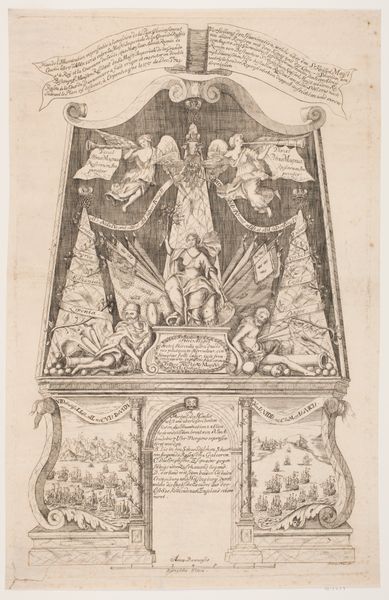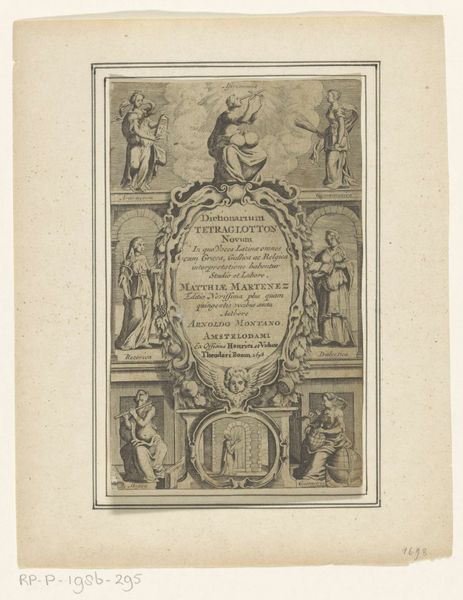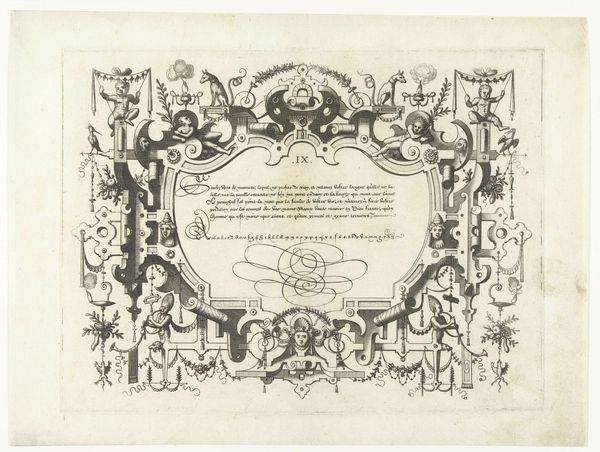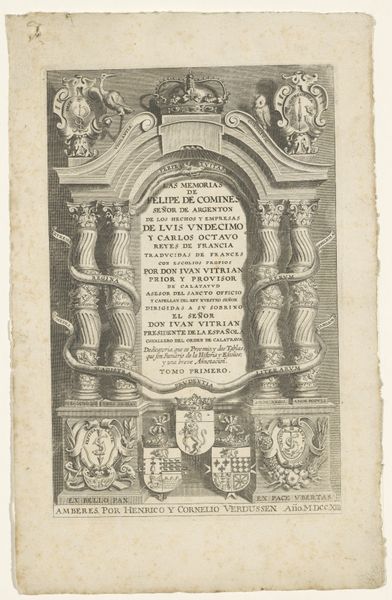
print, engraving
#
ink paper printed
# print
#
form
#
11_renaissance
#
line
#
northern-renaissance
#
decorative-art
#
engraving
Dimensions: height 232 mm, width 180 mm
Copyright: Rijks Museum: Open Domain
Curator: This is the "Titelblad," a 1548 engraving by Balthazar van den Bos, held here at the Rijksmuseum. The printed ink on paper captures an ornamental design typical of the Northern Renaissance. Editor: My immediate impression is a feeling of meticulous restraint. The lines are incredibly precise, almost clinical, yet there’s also a sense of suppressed exuberance in the decorative elements. Curator: Precisely! These kinds of title pages were crucial for standardizing the dissemination of knowledge. This specific work by Van den Bos served to advertise, becoming essentially, an exercise in marketing techniques during a time of rapid change in printing technologies. Note how his careful craftsmanship lends status and permanence to ephemeral paper. Editor: Yes, the lettering itself becomes an almost architectural element within the design, highlighting a focus on order, structure, and clear messaging which feels deeply connected to that early printing culture of increased literacy. It does feel like a claim to some form of knowledge production and gatekeeping too, no? Who was really able to access these prints in society? Curator: That’s the complex relationship between increasing distribution but also preserving control. Think of the paper used - relatively accessible to some but also reflecting the emerging commodity markets. And the skills! We’re talking about the specialized knowledge and labor invested in this type of printmaking during the period of immense social and political transformation, the start of true industrialization of thought! Editor: Looking closely, those grotesque faces seem less about playful whimsy and more about the disquiet simmering beneath the surface of a changing world. A moment of huge gendered and racial division as trade expands but is fundamentally still unbalanced? Are those "monster" faces visual reminders of power imbalances baked into even these apparently straightforward objects? Curator: They signify both mastery over, and a subconscious fascination with the grotesque—elements drawn from ancient Roman designs but re-worked to signal this period of profound technological transition. Editor: This object demonstrates not only material conditions of production during that transitional moment, but exposes complicated ideological dimensions. By considering these things, "Titelblad" acts as an invitation to ask questions about our own production and distribution mechanisms too, centuries later. Curator: Indeed. Even an apparently functional piece embodies larger social, intellectual, and economic landscapes which helps make a visit to the Rijksmuseum endlessly rewarding.
Comments
No comments
Be the first to comment and join the conversation on the ultimate creative platform.

